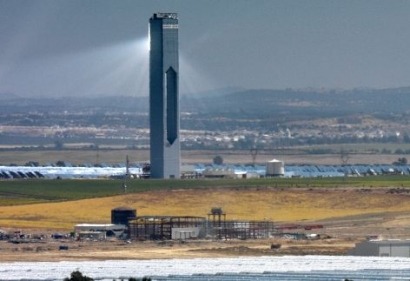
“While it will be some time until solar technologies achieve very high penetrations in the U.S. grid, international experience in wind deployment demonstrates the importance of increasing overall grid flexibility,” write Paul Denholm and Mark Mehos, the authors of the study.
“Key factors in improving grid flexibility include increasing the ramp range and rate of all generation sources and the ability to better match the supply of renewable resources with demand via increased spatial diversity, shiftable load, or energy storage,” they continue.
The use of thermal energy storage in concentrating solar power plants provides one option for increased grid flexibility in two primary ways, the report says.
First, TES allows shifting of the solar resource to periods of reduced solar output with relatively high efficiency.
Second is the inherent flexibility of CSP/TES plants, which offer higher ramp rates and ranges than large thermal plants currently used to meet a large fraction of electric demand.
Given the high capacity value of CSP/TES, this technology could potentially replace a fraction of the conventional generator fleet and provide a more flexible generation mix. This could result in greater use of non-dispatchable solar PV and wind meaning CSP and PV may actually be complementary technologies, especially at higher penetrations.
The authors note that the preliminary analysis performed in this work requires advanced grid simulations to verify the actual ability of CSP to act as an enabling technology for other variable generation sources.
Complete production simulations using utility-grade software, considering the realistic performance of the generation fleet, transmission constraints, and actual CSP operation will be an important next step in evaluating the benefits of multiple solar generation technologies, they say.
For additional information:
Enabling Greater Penetration of Solar Power via the Use of CSP with Thermal Energy Storage

